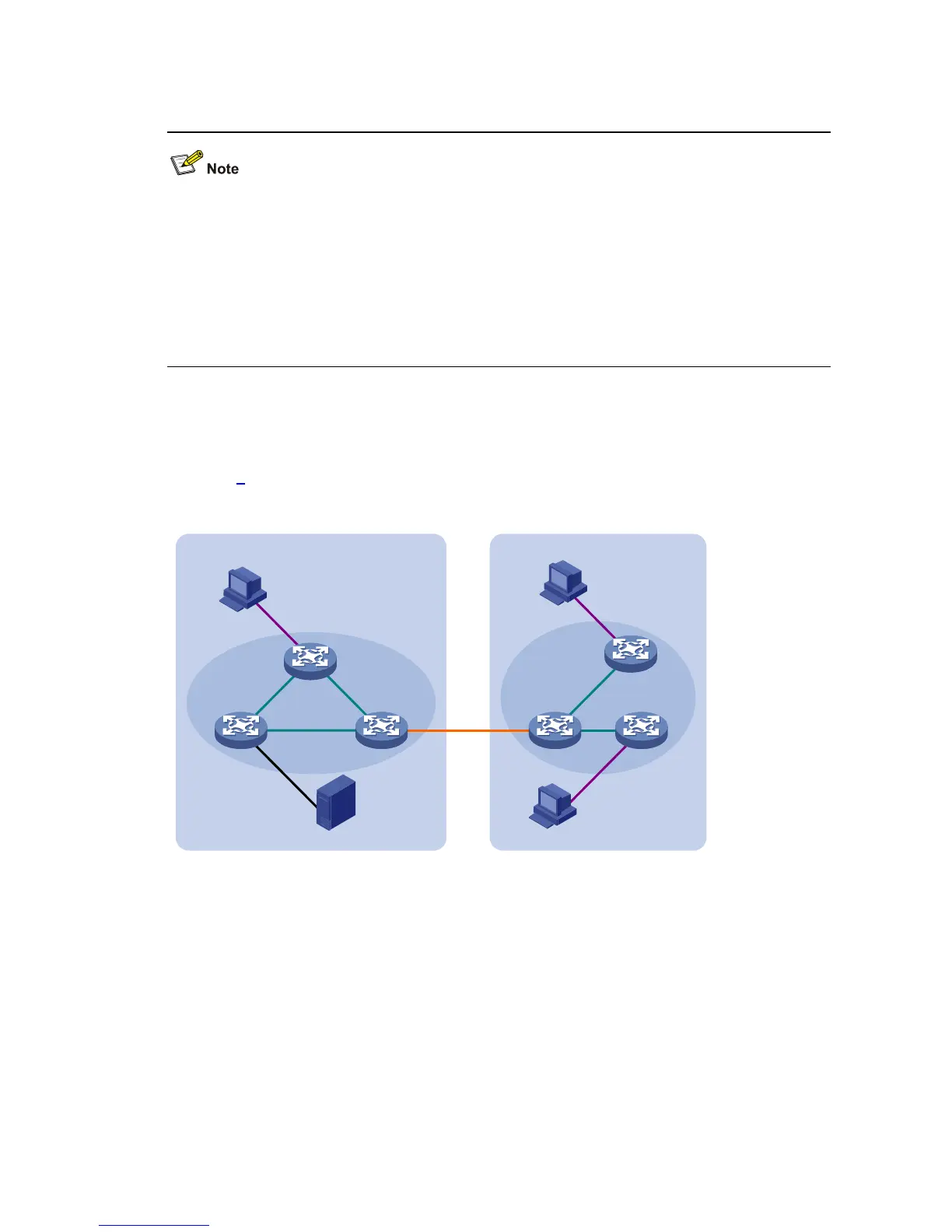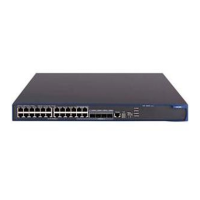1-9
Multicast Protocols
z Generally, we refer to IP multicast working at the network layer as Layer 3 multicast and the
corresponding multicast protocols as Layer 3 multicast protocols, which include IGMP, PIM, and
MSDP; we refer to IP multicast working at the data link layer as Layer 2 multicast and the
corresponding multicast protocols as Layer 2 multicast protocols, which include IGMP Snooping.
z This section provides only general descriptions about applications and functions of the Layer 2 and
Layer 3 multicast protocols in a network. For details about these protocols, refer to the related
chapters of this manual.
Layer 3 multicast protocols
Layer 3 multicast protocols include multicast group management protocols and multicast routing
protocols.
0 describes where these multicast protocols are in a network.
Figure 1-5 Positions of Layer 3 multicast protocols
AS 1 AS 2
Source
Receiver
Receiver
Receiver
PIM
PIM
MSDP
IGMP
IGMP
IGMP
1) Multicast management protocols
Typically, the Internet Group Management Protocol (IGMP) is used between hosts and Layer 3
multicast devices directly connected with the hosts. These protocols define the mechanism of
establishing and maintaining group memberships between hosts and Layer 3 multicast devices.
2) Multicast routing protocols
A multicast routing protocol runs on Layer 3 multicast devices to establish and maintain multicast routes
and forward multicast packets correctly and efficiently. Multicast routes constitute a loop-free data
transmission path from a data source to multiple receivers, namely a multicast distribution tree.
In the ASM model, multicast routes come in intra-domain routes and inter-domain routes.

